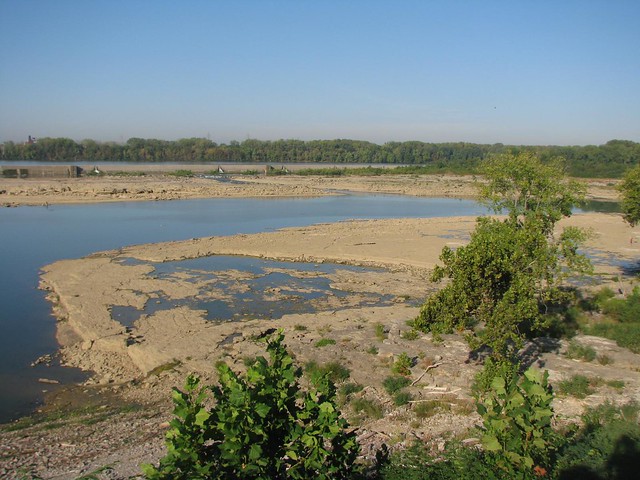
This photo shows the park's claim to fame. At this site, the Ohio River has exposed a nice stretch of Devonian limestone dating to about 380 million years ago (with limited exposures of the older Silurian and younger Mississippian). It was a good year to pick as my first visit, I was told: the river is low right now, meaning that the Indiana shore, on the interior of the dam you see in the background of the photo, is easily reachable on foot.
The shore is divided into an inner bank, the Indiana shore proper, and the outer bank, which sits just under the dam. The outer bank is home to the best fossils, and that was the destination of the hike I joined early in the morning. About two dozen folks joined in, all from varying backgrounds and levels of knowledge. The hike was led by volunteers with the park's Naturalist at Heart program who were generous with their knowledge and their time. I also hung out with a party from Kent State University's geology department. It was great to hang back and listen to them discuss what we were seeing, and fun to offer a couple tentative interpretations of some of the features. I was thrilled that I wasn't laughed off the bedrock!
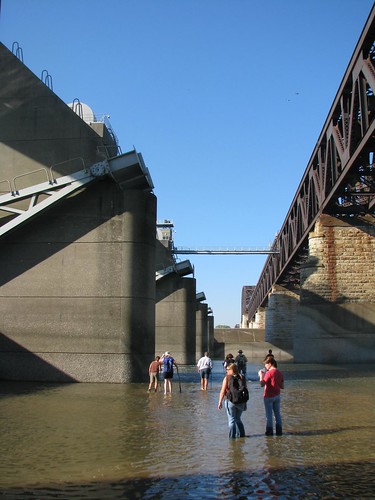
The hike had a wet start, as we had to ford a small part of the river and make our way across the dam.
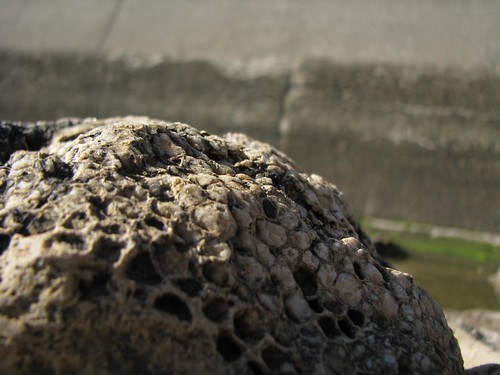
Once we reached the outer bank, the group separated out as individual fossils demanded our attention or the viewfinders of our cameras. There were so much fossil coral that it was very easy to imagine the floor of the shallow tropical sea where they originally grew, so many ages ago.
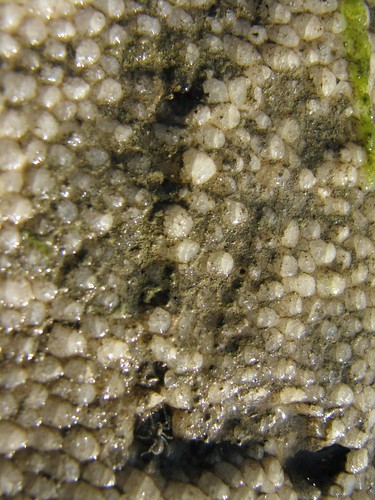
I just noticed the spider in the photo above, a reminder that fossils aren't just baubles for human enjoyment, but are still part of their living surroundings.
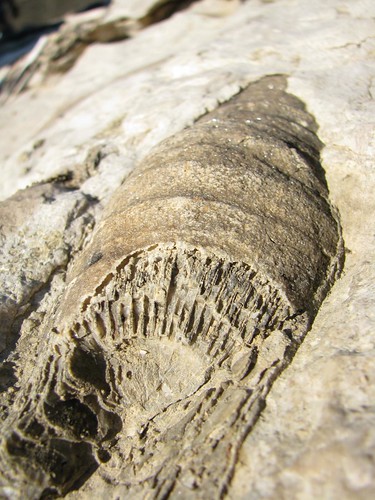
The most common fossils in this spot are the horn corals, so named because early American settlers mistook them for fossilized bison horns.


Here's a Petoskey stone in its natural, unpolished state.
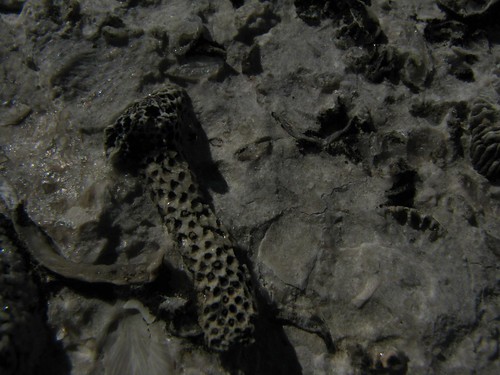
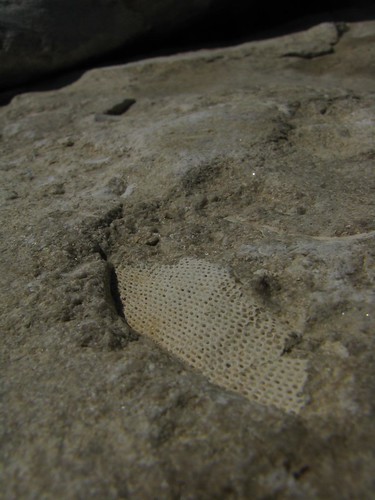
Keen eyes could also spot the occasional bryozoan peering out from the limestone.
Stay tuned for more photos from the Fossil Fest and discussion of the event and the natural history of the area all this week.

No comments:
Post a Comment